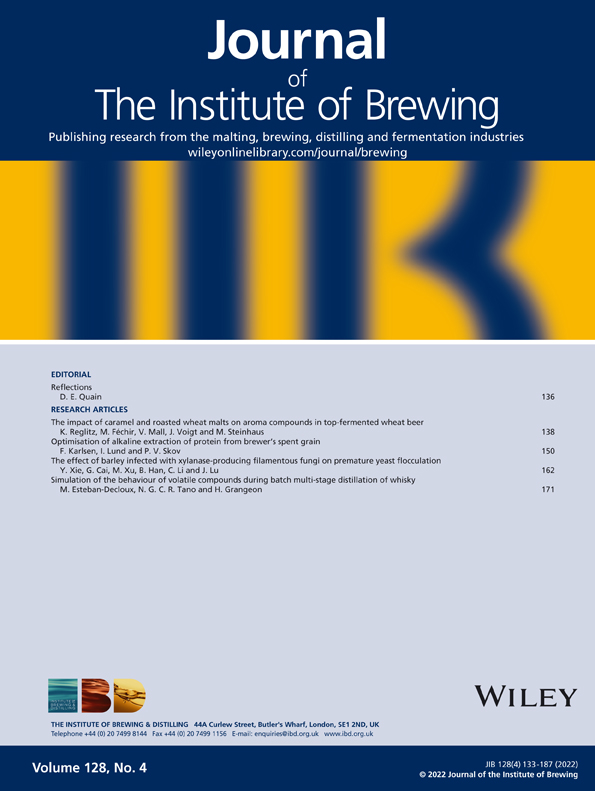IDENTIFICATION OF LAMBIC SUPERATTENUATING MICRO-ORGANISMS BY THE USE OF SELECTIVE ANTIBIOTICS
Abstract
The microbial population present in Iambic beer after one year of spontaneous fermentation consists mainly of Brettanomyces yeasts, lactic acid bacteria and acetic acid bacteria. The density of the wort by that time has decreased to around 3.5° Plato. At that time a period of superattentuation is initiated, resulting in a Iambic with sometimes less than 1° Plato. Such old Iambics are used in the production of gueuze. In order to find out which organisms are really necessary for this process. Iambic attenuated to around 3.5° Plato was pasteurized and re-inoculated with a mixed microbial population obtained from fermenting Iambic. By the addition of the antibiotics actidione, pimaricin, gentamycin, oxytetracycline and nisin it was found that Brettanomyces was the main organism responsible for superattenuation, although this was less pronounced when Pediococcus was absent. Acetic acid bacteria were not involved. Bacteria alone were not really superattenuating. The process with Iambic wort which had reached the 3.5° Plato value by a natural spontaneous fermentation was slower than with a Iambic wort pre-fermented to 3.5° Plato with S. cerevisiae. It was found that Brettanomyces but not Saccharomyces survives well under the conditions normally found for a 1 year old Iambic.




